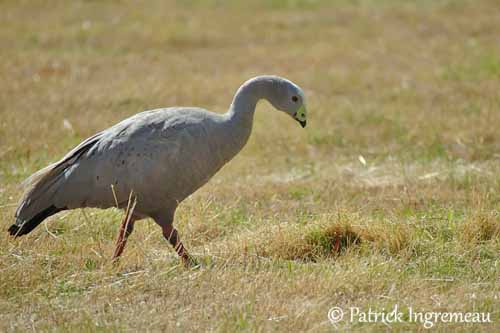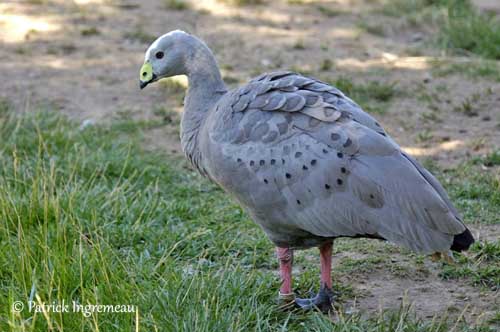
Fr: Céréopse cendrée
All : Hühnergans
Esp: Ganso Cenizo
Ital : Oca di Capo Barren
Nd: Hoendergans
Sd: Hönsgås
Photographer:
Patrick Ingremeau
TAMANDUA
Text by Nicole Bouglouan
Sources:
HANDBOOK OF THE BIRDS OF THE WORLD vol 1 by Josep del Hoyo-Andrew Elliot-Jordi Sargatal - Lynx Edicions - ISBN: 8487334105
GUIDE DES CANARDS, DES OIES ET DES CYGNES – de Steve Madge - Delachaux et Niestlé - ISBN: 2603013769
BIRDS OF ASIA AND AUSTRALIA by David Alderton – Southwater - ISBN : 184215978X
BirdLife International (BirdLife International)
Birds in backyards (Birds Australia and Australian Museum)
ANIMALS – Explore, discover, connect
Cape Barren Goose
Cereopsis novaehollandiae
Anseriforme Order – Anatidae Family
BIOMETRICS:
Length: 75-100 cm
Weight: 3170-6800 g
DESCRIPTION:
The Cape Barren Goose was nearly extinct by the 1950s. This Australian primitive goose, endemic to Australia, has been considered first as an aberrant shelduck, and then as the immature phase of the Black Swan.
This species is now the unique member of the genus Cereopsis.
The adult is a large goose with pale grey plumage. There are several rows of dark spots across the scapulars and the wing-coverts. The flight feathers have broad black tips, forming a conspicuous trailing edge well visible in flight. The tail feathers are black too.
On the pale grey head, the centre of the crown is whitish. The bill is black, covered with greenish-yellow cere. The eyes are reddish-brown, surrounded by narrow black eye-ring. The legs are reddish, but the webbed feet are blackish.

Both adults are similar but the female is slightly smaller than male.
The juvenile resembles adult, but wings and scapulars show more pronounced spotting. The eyes are dull brown.
The chicks have black down striped white above and pale grey below. The head is striped black and white with a black mask.
VOICE: SOUNDS BY XENO-CANTO
The Cape Barren Goose is noisy when threatened and during the displays. In flight, the male gives loud, harsh, trumpeting “ark ark-ark, ark-ark”, while the female produces sounds similar to the grunt of a pig. The young give flute-like whistles as contact call.
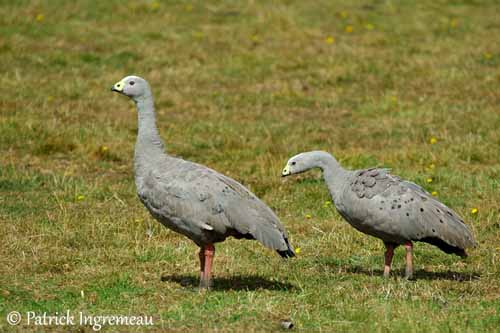
HABITAT:
The Cape Barren Goose is usually found on small offshore islands where it breeds in grassy areas, tussock grass or scrub.
Outside the breeding season, they reach the beaches and the coastal pastures, and frequent the shores of freshwater lakes and brackish lagoons.
RANGE:
The Cape Barren Goose occurs on small islands off S Australia and Tasmania.
After the breeding season, some of them may disperse while others remain on the breeding grounds.
The non-breeding birds fly to mainland or larger islands where they feed in coastal pastures.
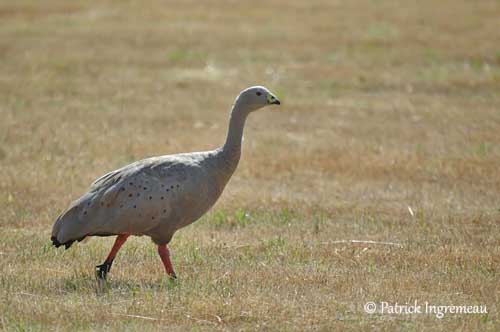
BEHAVIOUR:
The Cape Barren Goose feeds exclusively on plant matter such as leaves, stems and seeds of the common island tussock grass Poa poifornis. It also consumes sedges, pasture grasses, barley, clover and legumes.
It grazes on land where it usually feeds. It rarely enters water or swims, except to protect the chicks. It can drink salt or brackish water.
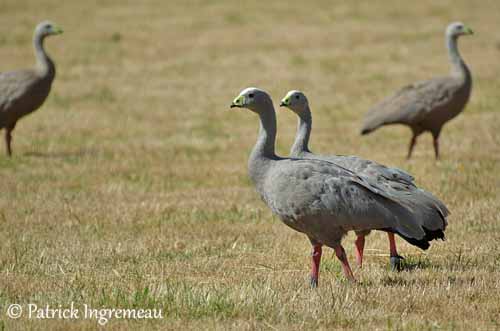
During the breeding season, they nest in loose colonies with the nests neatly apart. The nest-site is strongly defended by the owners against the other geese and intruders such as foxes, dogs and even humans.
The Cape Barren Goose is monogamous with life-long pair-bonds.
As usual in species with permanent pair-bonds, the male plays an active role in nesting duties.
The courtship displays are unique in each species, and the displays between two mates only affect these two birds.
Unlike numerous Anatidae species, the Cape Barren Geese copulate on land instead in water. After the copulation, the male often stretches its neck and gives a loud call while spreading the wings fully, a common feature amongst geese and known as “triumph ceremony”.
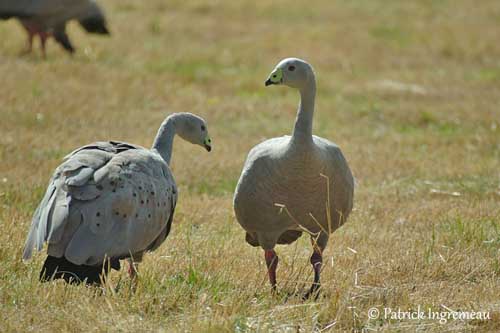
FLIGHT:
The Cape Barren Goose performs powerful flight with both shallow and fast wing-beats. It takes off and alights on land.
They are flightless when they moult the flight feathers.
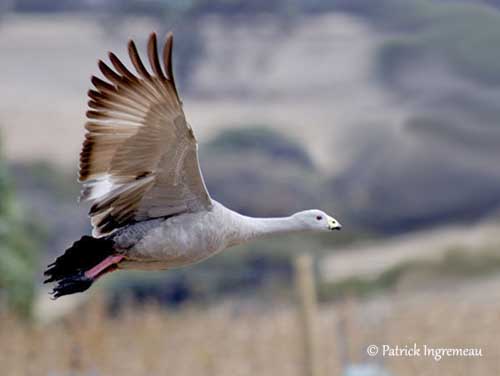
REPRODUCTION:
The breeding season occurs during winter and starts in May-June.
The Cape Barren Goose breeds in loose colonies with well-spaced out nests. The male builds the nest on the ground with vegetation. The interior is lined with down.
The territory is established as soon as the autumn, and strongly defended by the pair.
The female lays 3-6 creamy-white eggs, and incubates during 34-37 days. The chicks are brooded by both parents and fledge about 70-76 days after hatching.
The young birds gather in small groups and reach the close islands or the continent.
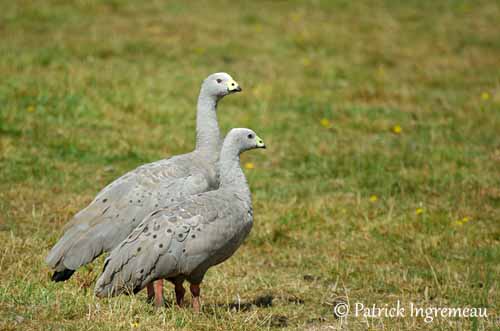
DIET:
The Cape Barren Goose is vegetarian, feeding exclusively on plant matter, and mainly the common island tussock grass Poa poifornis. But it also takes leaves, stems and seeds of various grass species.
PROTECTION / THREATS / STATUS:
The Cape Barren Goose has been hunted almost to extinction in the 20th century, but today, the species is protected by several wildlife agencies and the populations have increased.
They are finally extinct in New Zealand where they had been introduced.
Changes in the habitat for agriculture expansion may become a threat for the breeding grounds. The management of the breeding islands as nature reserves could be necessary, with limited grazing to avoid the dense scrubland.
The species is not currently threatened and the numbers are increasing within the restricted range.
